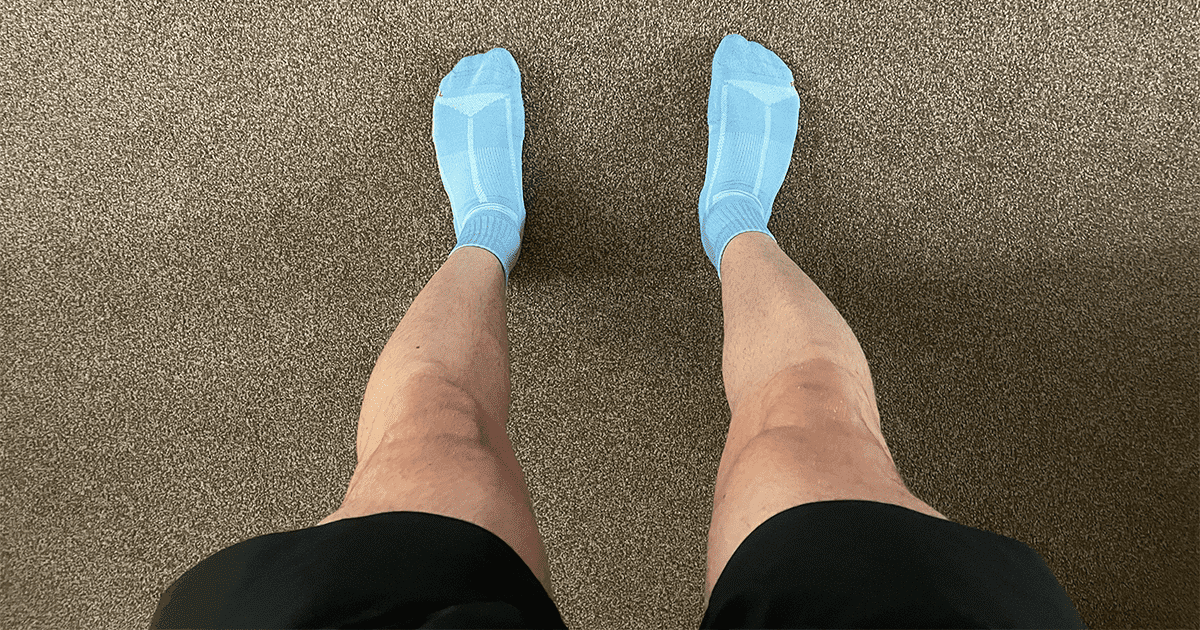How to increase motivation after a bad race
So, you’ve had a bad race, and now the doubt and disappointment have begun to set in. Look no further, here’s how to increase your motivation and get your training back on track.

It happens to us all, from time to time, we experience a race which didn’t go exactly to plan. Whether you failed to finish, missed your goal time, or missed out on a position or two, it isn’t a nice feeling.
We know that. However, dwelling on your defeat won’t get you very far. In fact, it may decrease your motivation and even stop you from training. Instead of bathing in disappointment, you need to take a step forward and embrace failure – helping you come back stronger than before.
Related: Should I feel bad for dropping out of a running race?
Keep reading to find out how to increase your motivation after a bad race, keep training, and even come back stronger from your defeat. It’s like Kelly Clarkson once said, “what doesn’t kill you make you stronger.”
Why did you have a bad race?
Before we look at increasing your motivation and getting your training back on track, we must first understand why you had a bad race in the first place. This could be because of numerous reasons, these may include:
- Was the terrain and elevation different to what you usually train on?
- We’re you feeling ill, fatigued, or perhaps overtrained?
- Did you fuel properly for the race?
1. Terrain & elevation

First, let’s discuss the terrain and elevation which you were racing on. Ask yourself if this was different to the terrain and elevation which you usually train on. For example, if you’ve been training on flat roads with no hills, then competed in a trail race it is to be expected not to do great. To perform our best, we must train on similar terrain and elevation in which we will be competing on. This allows our body adequate time to adapt to the demanding conditions.
2. Illness, fatigue, and overtraining
We’re you feeling at all ill, a little fatigued, or perhaps overtrained? It’s not recommended to race when ill or fatigued, doing so is a recipe for disaster itself. If you have an abnormally hot temperature, low energy levels, and generally feel lethargic, then chances are you shouldn’t be racing.
As well as being ill or fatigued, you may have overtrained and burnt yourself out before racing. Overtraining occurs when we train too frequently with too little rest periods in-between each session.
Symptoms of overtraining include:
- Lack of energy
- Loss of appetite
- Frequent minor infections
- Loss of libido
- Increased heart rate at rest
To recover from a state of overtraining, we suggest taking some time off of running entirely. Give yourself up to two weeks of rest, allowing a physical and mental break from your training.
Related: 8 signs you may be overtraining as a runner.
3. Did you fuel properly for the race?
Applying more to the longer distance races such as the half-marathon, marathon, and ultra-marathons is how you fuel before and during the race. For example, when running a marathon, you want to ensure you’ve eaten plenty of carbohydrates before the race while also consuming a couple of energy gels during the race.
Related: 20 running quotes to motivate you for the marathon.
Not fuelling properly for a race is a common mistake made by beginners and experienced runners alike. Ultimately, this comes down to personal experience and personal preference. If for example, you ate very little before a half-marathon attempt and felt unenergetic, this is a sign that you need to consume more carbohydrates the night before and the morning before the race.
Analyse and potentially set NEW realistic goals

Now that you have a better idea as to why you had a bad race, it’s time to put this behind you and work on creating new goals to work towards. While you don’t have to change your current goals if you don’t want to, they may have been set a little too high and out of your reach too soon.
A simple implementation strategy we recommend is setting both short and long-term goals. For example, let’s say you’re aiming to run another 10km race twelve-weeks from now, you may want to race a 5k, six-weeks out with goal time, or alternatively achieve set splits for a given running workout or interval session.
Implementing short-term goals into your training will build confidence in your own ability while measuring your current performance towards your long-term goals, all while increasing your motivation to train.
Likewise, you want to assess your current long-term goal(s) and ensure this is both realistic and not too soon in the near future. Setting unrealistic long-term goals will only decrease your confidence and motivation if they are not achieved. It’s far better to set more realistic goals and slowly work your way up than tear yourself down each step of the way.
Switch up your training
If you’re going to compete again soon and don’t understand why you had a bad race or even if you do, chances are you’re going to want to switch up your training.
For example, as mentioned previously if your goal race includes a mix of terrain and elevation, then you’ll want to train on the hills during your training. Likewise, you should look to incorporate a mix of tempo runs, interval runs, long-runs, and recovery runs into your training.
Related: Everything you need to know about the long run.
However, when increasing the frequency of your training and your weekly mileage, remember to increase this by no more than 10% each week. Increasing your weekly mileage too soon drastically increases your risk of injury.
Related: How to recover after a run or race.
Make sure you’re enjoying your training
One way to spiral into a lack of motivation after a bad race is by not enjoying your training. It’s especially important after a bad race to take a break and train how you want to – focusing on the enjoyment rather than how fast, how far, and how long each training session is.
Consider running with a friend, a group, or incorporating different kinds of cross-training which you find enjoyable to increase your motivation and keep your training on track. Remember, you’re much more likely to stick to your goals and running if you’re enjoying it.
Sign-up for a new race

Finally, what better way to get your training back on track than putting that bad race behind you and signing up for a new race in the not so distance future. Not only will this give you something to aim for, but this will also allow you to tailor your training accordingly. If the race goes well, your confidence should skyrocket through the roof.
The bottom line
We all experience bad races, however, once we learn to embrace failure and rethink our training, we can come back stronger and faster just a few weeks later. Take the time to understand why you had a bad race, reassess your goals, and most importantly make sure you’re enjoying training. Finally, take the step to sign up for a new race which you’ll hopefully wipe the floor with.

Matthew is a lifelong runner, chief tester of all products, the founder of Running101, and freelance content writer for active brands. When he’s not writing, he enjoys lifting weights, cycling in the Lake District, and watching fast cars drive in circles on a Sunday. He also has a BA in sport, exercise and physical activity from the University of Durham.




